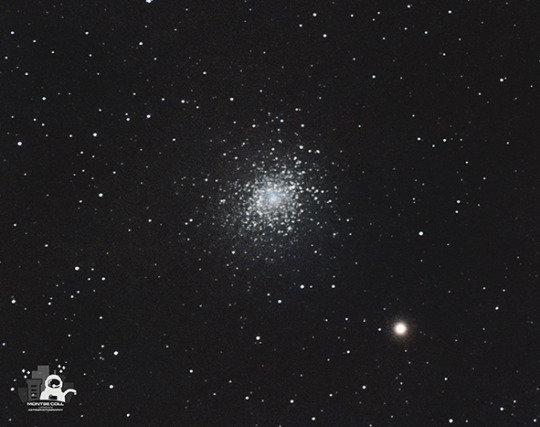#messier5
Explore tagged Tumblr posts
Text

M5, NGC 5904 globular cluster.
Constellation Serpens
Distance: 24.500 ly
March 25, 2023 -Montcada i Reixac
#astrophotography#urban astrophotography#cosmos#universe#messier5#globular cluster#original photographers
54 notes
·
View notes
Photo

Messier 5 is a globular star cluster, 100,000 stars or more, bound by gravity and packed into a region around 165 light-years in diameter.
Image Credit: Adam Block, Mt. Lemmon SkyCenter, University of Arizona
#globularcluster#aglomeradoglobular#star#estrela#spac#espaço#m5#messier5#messier#astronomy#astronomia
789 notes
·
View notes
Photo

Globular clusters Messier-3 (top) and Messier-5 (bottom) Photographed from my terrace in Bordeaux France. #messier3 #messier5 #astrophotography (at Bordeaux, France) https://www.instagram.com/p/CBQILByn9bg/?igshid=j18evn4i0fk1
0 notes
Photo

Messier 5
Messier 5 is a globular cluster located about 25,000 light years away towards the constellation Serpens, the Serpent. Though only about 165 light years across, the cluster contains some 100,000 stars or more, most more than 12 billion years old.
Messier 5 is one of the oldest globular clusters, already ancient satellites of galaxies. It orbits our own Milky Way. The stars of Messier 5 formed together from the same molecular cloud, and the most massive have already died in supernova explosions. Surprisingly, among the aging stars are younger looking blue stars, probably blue stragglers- the results of stellar collisions.
Image from NASA, information from ESA.
#astronomy#stars#space#messier 5#messier5#m5#m 5#globular cluster#globular clusters#globular star cluster#globular star clusters#science#star cluster#star clusters#serpens#constellation serpens#serpent constellation#milky way
22 notes
·
View notes
Photo

Messier 5
Messier 5 is a globular star cluster located about 25,000 light years away between the constellation Serpens (the Serpent) and Libra (the Balance). It is about 165 light years across and contains some 100 thousand stars or more.
The stars of Messier 5 are estimated at around 13 billion years old, making Messier 5 one of the oldest globular clusters. Globular clusters form early in the birth of a galaxy, and stick to the halo of their host galaxy.
Image and information from NASA.
#astronomy#stars#space#messier 5#messier5#m5#m 5#globular star cluster#globular star clusters#star cluster#star clusters#serpens#constellation serpens#serpent constellation#libra#constellation libra#balance constellation#galaxy#galaxies#science
9 notes
·
View notes
